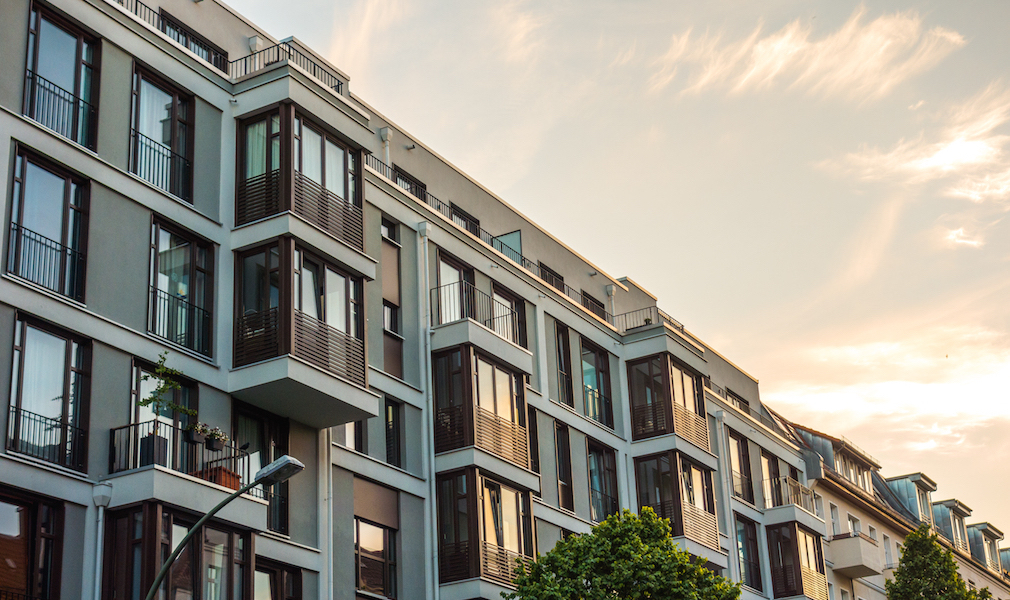Depending on which report you believe, rents are either slightly falling or just hit another all-time high. Regardless of whether rent is still going up nationwide, one thing is certain: Rents have gone up significantly over the last 10 years.
According to data from the U.S. Census Bureau, median asking rents have risen from approximately $450 in 1998 to just over $1,000 in the third quarter of this year.
The average rent for new apartments is on the rise too. New data from RENTCafé and Yardi Matrix shows that the average rent for a new apartment has risen by 28% since 2008.
Given that increase, one might think that renters are getting more for their money in the form of larger apartments, right? Wrong.
Despite rents on new apartments steadily increasing over the last 10 years, apartments are actually getting smaller, meaning that renters are paying more but getting less for it.
According to the report, the average size of a new apartment completed in 2018 is 941 square feet, which is 52 square feet smaller than the size of an apartment built 10 years ago.
Overall, that’s a decrease in size of 5% in 10 years, despite prices rising 28% during that same time.
The decrease in size has been driven by declines in studio and one-bedroom units, while two-bedroom apartments have largely stayed the same size over the last 10 years.
According to the RENTCafé report, studio apartments have shrunken from 573 square feet in 2008 to 514 square feet this year. It should be noted, though, that studio apartments represent a small segment of the rental market, only 5% of all apartments nationwide.
The largest chunk of apartments (43% of the total number of units) are one-bedroom units, which have shrunken from 790 square feet in 2008 to 757 square feet this year.
So what is driving the decrease in size and increase in cost?
RENTCafé suggests that builders have simply adapted to the times and are catering to renters’ desires.
“Changes in renters’ living habits are literally redrawing floor plans. The largest share of apartment dwellers, Millennials prefer living in locations close to restaurants and entertainment rather than having a large kitchen or living room to cook or entertain at home,” RENTCafé said. “But the rising interest in smaller living spaces is equally motivated by price, as the need to save on rent sparks demand for smaller units. Unfortunately, renters are paying much more for less.”
Apartment shrinkage exists in every region of the country, with the exception of the Midwest, where the average apartment size has increased by a whopping 1% in the last 10 years.
In every other region that RENTCafé examined, average apartment sizes are shrinking.
According to the RENTCafé report, apartments in California saw the biggest downsizing in the last 10 years, falling by 12%. The average Californian apartment is now 116 square feet smaller than 10 years ago, shrinking from 974 square feet to 858 square feet.
New apartments in the Pacific Northwest are the country’s smallest, checking in at just 805 square feet, 10% smaller than 10 years ago.
In fact, despite its reputation for having the tiniest apartments in the country, Manhattan does not actually have the smallest apartments. That honor goes to Seattle, where new apartments average just 711 square feet.
New apartments in Manhattan average 733 square feet, tied with Chicago for second smallest in the nation.
So, what’s driving the decline, beyond renters’ apparent desire for a smaller kitchen, etc.?
Perhaps increases in construction costs are leading to smaller units? Or maybe it’s a bit like air travel these days, where the airlines keep giving us less and less space so they can squeeze more seats onto the plane, all while charging us more and more?
It’s a bit of a captive audience thing, right? People still need to fly, so they’ll begrudgingly pay whatever the airlines charge despite less legroom and higher prices because they have no alternative. And all that allows the airlines to make more money off the same planes.
Perhaps it’s the same with apartments. Are property owners building smaller apartments simply because they can? Build smaller apartments and you can build more units. Build more units and you get more rent, especially when rents keep going up. If you can build 56 units in the same space that you used to build 48 units, well that’s more money for you.
So renters are stuck between a rock and a hard place, so to speak. They need a place to live, so they’ll pay whatever they have to pay to get that place, despite it apparently being smaller and costing more than it used to. And all because they have no other choice.
But maybe that’s a pessimistic view, or maybe just playing devil’s advocate. What do you think?





